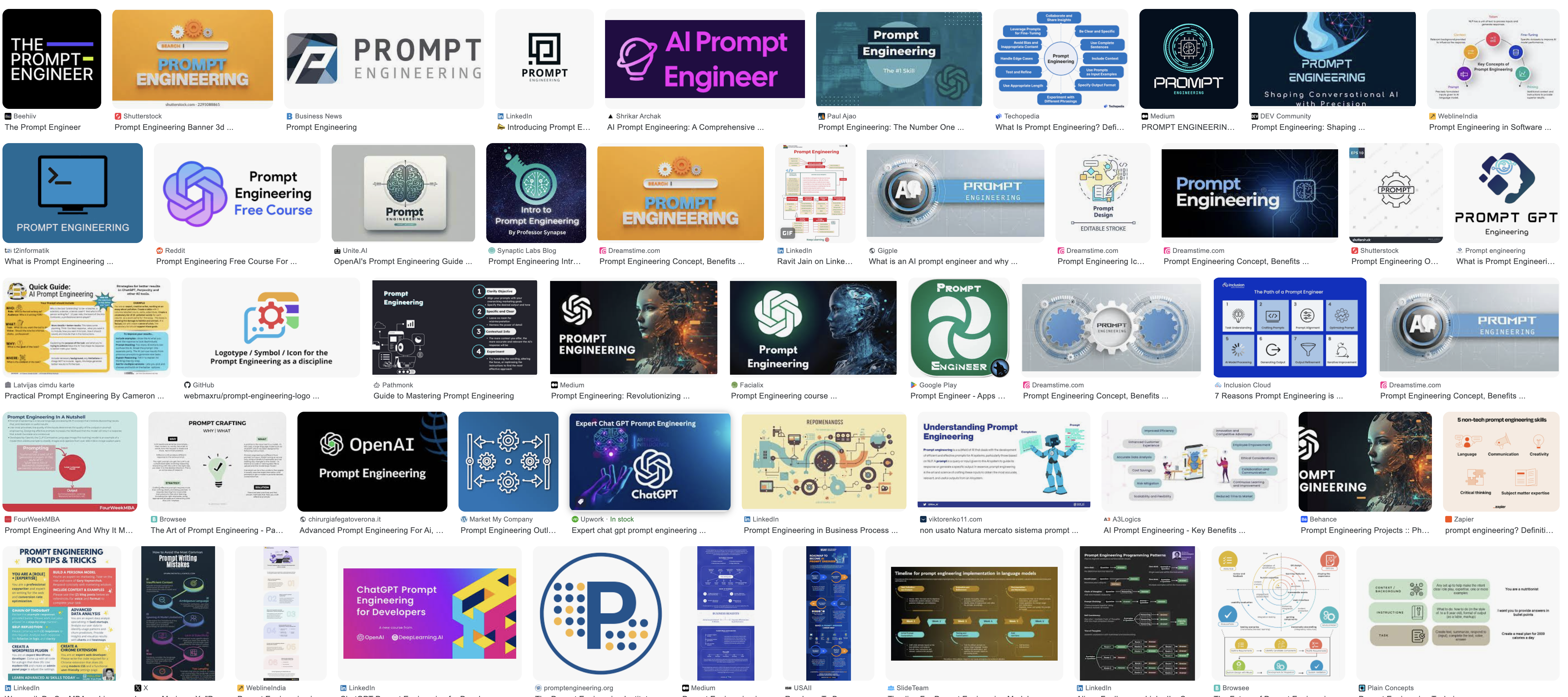How to Write Successfully with AI: Kairos-Driven Prompts
This creative challenge constitutes the second of eight assignments that undergraduate students complete for Writing with Artificial Intelligence. Rhetoricians, technorhetoricians, and compositionists have developed a nuanced understanding of the creative/writing process, including prewriting, inventing, drafting, collaborating, researching, planning, organizing, designing, rereading, revising, editing, proofreading, sharing or publishing. Scholars, theorists, and practitioners in writing studies have plumbed the depths of intuition, inner speech, and felt sense. CCCC (Conference on College Composition and Communication) identifies "rhetorical knowledge" as "the basis of good writing" (Council of Writing Program Administrators et al., 2011, p. 6). Stylists and usability experts have written volumes on style and the elements of style. And yet, at this early stage of the rise of the machines, "engineering prompts" are typically presented arhetorically and with a focus on invention or production. Often, "engineered prompts" don't frame writing as a process from a rhetorical perspective. They don't emphasize that writers often begin with rhetorical analysis of the rhetorical situation that surrounds the exigency, the call to write. They don't emphasize that writers should begin with careful consideration of the contextual variables that need to be considered to respond with clarity and persuasion to the communication situation -- variables such as the media, information literacy perspectives, research methodologies inscribed by the audience/discourse community/community of practice they are addressing. Thus, this challenge calls for students to adopt the persona, ethos, and diction of a rhetorician and compositionists. Thus, this challenge calls for students to analyze the genre of "prompt engineering" and then to develop a tutorial for writers to help them develop "kairos-driven prompts," which are informed by research and scholarship in writing studies. Rather than using "engineering language," students use the discourse, register and knowledge-base of rhetoricians and compositionists to help writers collaborate effectively with AI.

The Creative Challenge — Develop Prompts based on Research & Scholarship
In order to prepare you for this second creative challenge, two key concepts are defined below:
- Prompt Engineering
- Kairos-Driven Prompts
Introduction to Prompt Engineering
Prompt engineering has emerged as a basic literacy competency in the age of generative AI, referring to strategies writers employ to elicit desired information and drafts from AI tools. While the internet abounds with advice on this emerging genre of discourse, prompt engineering is still in its infancy, presenting significant opportunities for improvement and refinement.
What is Prompt Engineering?
Prompt engineering is the process of designing and optimizing inputs (prompts) for artificial intelligence models, particularly large language models (LLMs), to generate desired outputs effectively. It involves structuring instructions that can be interpreted and understood by generative AI models to perform specific tasks or generate particular types of content.
Key Prompt Engineering Techniques
- Zero-shot prompting: This technique involves providing the model with a direct instruction or question without additional context or examples. It’s best used for relatively simple tasks and allows the model to generate responses based solely on its pre-existing knowledge.
- Few-shot prompting: This method involves supplying the model with examples to guide its output. It’s more suitable for complex tasks and helps the model better understand the desired response format or style.
- Chain-of-thought (CoT) prompting: This approach encourages the model to break down complex reasoning into intermediate steps, leading to more comprehensive and well-structured outputs.
- Prompt chaining: This technique involves splitting complex tasks into smaller subtasks and using the model’s outputs to accomplish the overarching task, improving reliability and consistency.
Problems with Prompt Engineering
As helpful as they are, “engineering tutorials’ often do not reflect the knowledge gains generated by writing studies research and scholarship. They typically don’t problematize writing and creative processes or contextualize prompts based on what we’ve learned over the past thirty year about prewriting, inventing, drafting, collaborating, researching, planning, organizing, designing, rereading, revising, editing, proofreading, sharing or publishing, or style/writing styles. They are not, generally, informed by rhetoric and composition practices, theory, or research. Perhaps most importantly, they are not “kairotic“: They do not foreground the call to write — the exigence, audience, and constraints (e.g., medium, methodological community, convention) — that impinge on what writers say, how they say it, when they say it.
- Technical Focus: Most tutorials approach writing from a mechanical perspective, emphasizing how to interact with AI systems rather than understanding the nuanced writing process.
- Lack of Rhetorical Foundation: Current advice often fails to incorporate insights from rhetoric and composition studies, neglecting crucial aspects of effective writing.
- Absence of “Kairotic” Awareness: Many strategies don’t consider the concept of kairos – the opportune moment or “right time” for making an argument or taking action.
- Oversimplification of Writing Processes: Tutorials generally don’t address the complexity of writing stages such as prewriting, inventing, drafting, revising, and editing.
- Neglect of Rhetorical Situation: There’s little emphasis on analyzing audience, purpose, and context when crafting prompts.
What are Kairos-Driven Prompts?
Kairos-driven prompts are a rhetorical approach to crafting instructions for AI language models that prioritize the contextual and situational aspects of writing. Unlike traditional prompt engineering, which focuses on invention and product, Kairos-driven prompts are informed by RhetComp (Rhetorical and Compositon) scholarship and research,
Kairos-driven prompts frame hybrid writing — humans writing with machines — as a dialogic, rhetorical, iterative process. They challenge writers ad AI systems to reflect on where they are in the writing process — prewriting, inventing, drafting, collaborating, researching, planning, organizing, desiging, rereading, revising, editing, proofreading, sharing or publishing — before generating any texts. They define their style and desired writing style before generating texts. They identify the point of view, voice, tone, diction, syntax you should use. They focus on on rhetorical reasoning. The prompts are designed to help writers engage in rhetorical reasoning. They challenge writers and AI tools to analyze the exigency, the call to write, the rhetorical situation audience and question what they want your audience to think, feel, and do. They consider your purpose and identify the sorts of research the writer needsto conduct to better understand their topic and present it in ways their reader need in order to accept and understand the information. Likewise, when you are engaged in “hybrid writing” — writing produced both by you and generative AI systems — you need to inform the AI about your rhetorical situation.
Key Features of Kairos-Driven Prompts
Defining Kairos-Driven Prompts: Kairos-driven prompts are carefully crafted instructions for AI writing assistants that explicitly incorporate awareness of timing, context, and rhetorical opportunity. They guide the AI to produce content that is not only relevant and well-written but also timely and responsive to the current rhetorical situation.
Key Characteristics of Kairos-Driven Prompts:
- Rhetorical Awareness: Consider purpose, audience, context, and constraints.
- Process-Oriented: Acknowledge various stages of writing from prewriting to publishing.
- Contextual Sensitivity: Adapt to specific discourse communities and methodological approaches.
- Temporal Awareness: Consider the specific moment in time when writing occurs or will be read.
- Audience-Centric: Factor in current knowledge, attitudes, and needs of the target audience.
- Stylistic Consideration: Guide appropriate voice, tone, and persona.
- Medium-Aware: Account for constraints and affordances of the presentation medium.
- Research-Informed: Draw on insights from writing studies and composition theory.
- Reflective Practice: Encourage critical thinking about writing choices.
- Iterative Refinement: Allow for ongoing adjustments based on changing contexts.
Writing Prompt
This challenge asks you to briefly review prompt-engineering tutorials, research and scholarship on rhetoric and composition, especially with regards writing processes. Additionally, it asks you to reflect on rhetorical processes — especially ways writers analyze their rhetorical situation and engage in rhetorical reasoning to determine the most appropriate media, voice, tone, and persona for a particular audience, community of practice, discourse community, or methodological community.
This assignment has two major deliverables:
- Tutorial
- Reflection
Tutorial Guidelines
- Develop a tutorial for college-level writers that helps them engage in a “stage” of the writing process; e.g., prewriting, inventing, drafting, collaborating, researching, planning, organizing, designing, rereading, revising, editing, proofreading, sharing or publishing.
- Audience: You may focus on academic, professional, or technical writers
- Format/Genre: You may express your tutorials as an Infographic (one page), article (up to 4 pages with visuals), gdoc presentation (four or five slides), or video (three minutes)
Reflection Guidelines
Report on your experiences researching prompt engineering; rhetoric and composition theory, research, and practice. Also report on your contributions to the group and use of AI.
| Meeting | Due Dates & Topics | In-Class Activities |
| 1 | Writing Workshop | In class work on Parts 1 and 2 of Creative Challenge #2 |
| 2 | Collaborative Work | Working in groups, work on Parts 3 and 4 of Creative Challenge #2. Before the end of class, agree upon tasks to be completed by individuals by next Tuesday. Your group will most likely need to arrange a group conference call on Sunday. |
| 3 | Writing Workshop | Working individually, work on the tasks you agreed to complete in your group |
| 4 | Collaborative Work | Working collaboratively in groups, complete Part 4 of Creative Challenge #2. |
| 5 | | Write a substantive draft of your reflection — Part 5 |
| 6 | Peer Review | Working in groups review other groups’ infographics for Creative Challenge #3 |
| 7 | Project Due | Complete Creative Challenge #2. Follow the submission instructions for the deliverables that are outlined at Creative Challenge #2 |
Step 1 – Learn about “Prompt Engineering” & RhetComp Research and Scholarship
The first step in any writing project is strategic research — i.e., catching up with the current status of the scholarly conversation on your topic.
Survey Prompt Engineering Tutorials
Working individually, you maywant to sse Google Images to search for infographics on prompt engineering. Also check out YouTube videos on prompt engineering. Or, check out these resources:
- A guide to prompting AI
- Prompting Techniques
- Structured Prompt Template
- Structured Prompt Template for Lengthy Information
- Advanced Prompt Techniques
- Full ChatGPT Prompts
- Writing effective prompts
- Secrets fo Prompting ChatGPT
- Prompt engineering guide with multiple techniques
Survey Research and Scholarship on Composing and Rhetoric
To expedite this assignment, you may want to pick on a stage of the writing process to frame your “Kairos-driven Prompt:” prewriting, inventing, drafting, collaborating, researching, planning, organizing, desiging, rereading, revising, editing, proofreading, sharing or publishing.
Or, rather than developing a prompt to help humans/AI collaborating on a stage of the writing process, you may focus on develop prompts to help the humans/machines increase their rhetorical awareness of the communication situation. For that, review
Rhetoric – Exploring Its Definition and Impact on Modern Communication
- Rhetorical Moves and Academic Writing
- Rhetorical Reasoning
- Rhetorical Situation
- Audience Awareness – How To Boost Clarity in Communications
- Medium, Media
- Occasion, Exigency, Kairos – How to Decode Meaning-Making Practices
- Perspective – What is the Role of Perspective in Reading & Writing?
- Purpose – Aim of Discourse – Intention
- Register
- Subject, Topic
- Text, Composition
- Writing Tools
- Writer, Speaker, Knowledge Worker
- Rhetorical Stance
- Rhetorical Theory – The Ultimate Tool for Effective Communication
Step #2 – Draft Individually & Collaboratively-Authored Prompts
Create free accounts with at least three GAI tools, such as ChatGPT-4o, Perplexity, Claude, or Gemini – or whatever other tool you want to check out.
Working individually,
- Before letting the AI system work for you, do your own thinking. Draft a Kairos-informed prompt
- Drop in the tutorials you’ve liked those most into an AI tool and ask for it to summarize them
- Drop in information about this assignment and its focus on Kairos-driven prompts.
- Drop in information about plagiarism and academic integrity.
- Drop in your purpose: What’s your focus? To give feedback during a stage of the writing process, to teach the AI tool about your rhetorical situation and have a conversation about an appropriate persona, tone, voice, writing style? etc
- Ask the tools to provide an annotated bibliography on prompt engineering
- Check the citations and hyperlinks the GAI tools provide. Check for hallucinations. Think. Work through different iterations.
Working collaboratively,
- Compile your individually authored (with AI) draft into a summarizing tool along with the drafts of the others in your group.
- Ask that tool to synthesize your documents. Wash, rinse, repeat. Keep iterating/distilling until you’ve created a solid, one-to-two page draft of a tutorial on prompt engineering written from a rhetoric/composition interpretive lens. Suggested summarizing tools.
- Ilene Frank’s List of Summarizing Tools
- The 10 Best AI Summarizers Tested and Compared for 2024
Step 3 – Choose a Medium to Express Your Tutorial
The medium for this assignmnent is open. You may craft your tutorial as an infographic, gdoc report, or video. Note you don’t have much time for this exercise so you shouldn’t choose the film/infographic approach if you don’t have competencies in those spaces.
Adobe Express Suggestions
To help with you with Adobe Express, watch the following tutorials:
- “Learn Adobe Express in 13 MINUTES!” – This YouTube video provides a quick overview of Adobe Express, covering templates, social media designs, and posters. It’s ideal for those who want a rapid introduction to the platform. Watch it here (YouTube).
- “Adobe Express for Beginners” – This tutorial on YouTube is part of the Adobe Creative Cloud channel and offers a comprehensive guide for beginners. It walks you through creating your first design using Adobe Express, leveraging templates and various tools to enhance your skills. Watch it here (YouTube).
- How to Use Adobe Express | Tutorial for Beginners in Under 5 Minutes” – Another YouTube tutorial that promises to get you started with Adobe Express in just five minutes. This is perfect for users who need a very quick introduction to the basics. Watch it here (YouTube).
- “Adobe Express Tutorial for Beginners | Learn Adobe Express in 1 Hour” – This one-hour tutorial by Amit Thinks on YouTube is great for those who want a more in-depth understanding of Adobe Express. It covers the basics thoroughly and offers practical tips for creating professional-quality designs. Watch it here (YouTube).
Design Suggestions
- Familiarize yourself with design conventions
- Working collaboratively, use Adobe Express to turn your group’s written tutorial into an infographic. The infographic should explain strategies for engineering effective prompts in language and images appropriate for college students
- Provide a link to your group’s infographic in the course sandbox. Use the commenting feature to list the names of all co-authors.
- Infographic Examples
Evaluation Criteria for Infographic/Video
- Provide an insightful, visually appealing text/infographic/video that teaches the key concepts related to prompt engineering from the perspective of writing studies
- Proximity: Related elements should be grouped together to create visual connections and improve readability.
- Alignment: Ensure elements are visually connected, creating a clean and organized look.
- Repetition: Use consistent design elements throughout the infographic/video to create a cohesive appearance.
- Contrast: Utilize contrasting colors, fonts, and shapes to highlight key information and create visual interest.
Step 5: Reflection
In 250 words, report on what you learned as a result of participating in this experiment. The reflection should reference the required readings and your composing processes so that I can see you’ve engaged thoughtfully in this creative challenge. Be sure to address how helpful you found the AI tools. Did the tool(s) work accurately and were they helpful or a waste of time?
Requirements for Reflections/Analysis
- You are not required to integrate/cite sources for this exercise, but if you do so follow APA 7.
- Please design your reflection/analysis for maximum impact
- Please employ a professional writing style
Part 6 – Submission Instructions – Deliverables
- Upload to Canvas a link to your individually authored “kairos-prompt”
- Upload to Canvas your group’s coauthored, polished tutorial on prompt engineering from a rhetcomp perspective.
- Upload to Canvas a .pdf version of your individually-authored reflection on your processes. As mentioned above, address the affordances and constraints of the AI tools you and your group experimented with. Please keep a copy of your chat logs in case I need to review it.
References
Council of Writing Program Administrators, National Council of Teachers of English, & National Writing Project. (2011). Framework for success in postsecondary writing. https://wpacouncil.org/aws/CWPA/asset_manager/get_file/350201


